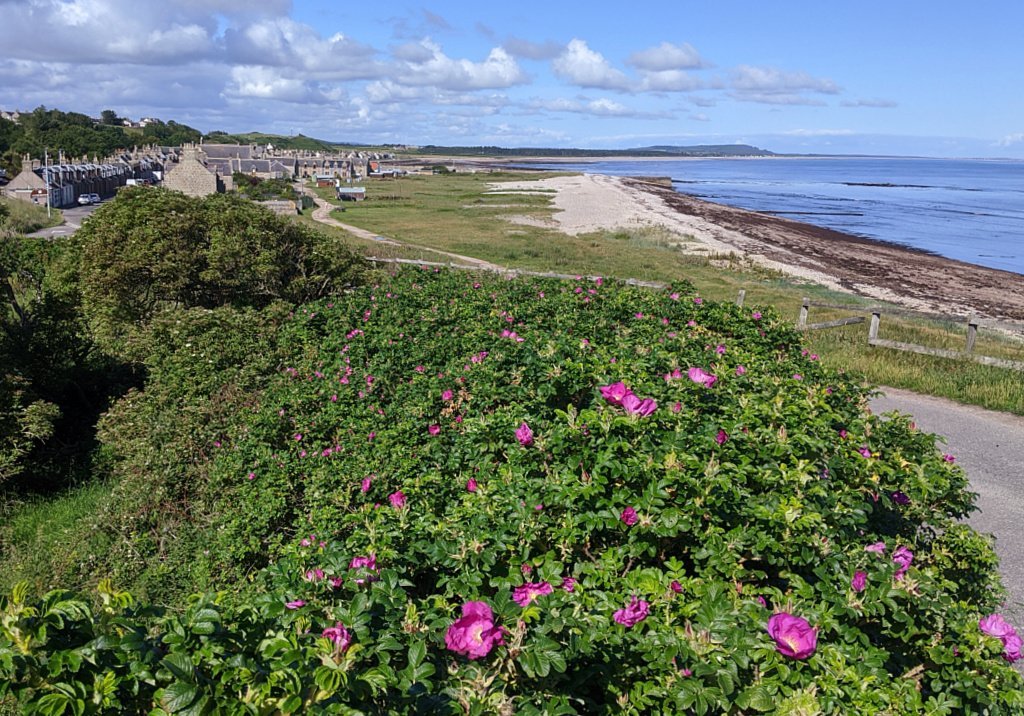There is a rose for every garden. Down in England, they have the rose as a national symbol. In fact, it was King Edward I, the Hammer of the Scots, who first used the rose in his Great Seal of State.
As that was some years before the Battle of Bannockburn in 1314 (when his son King Edward II was defeated) you can see that roses have been associated with English royalty for a long time.
The original white rose is thought to be Rosa alba, a wild species, with pale glossy foliage and scented simple white flowers. It flourishes in hedgerows widely right across Europe and beyond.
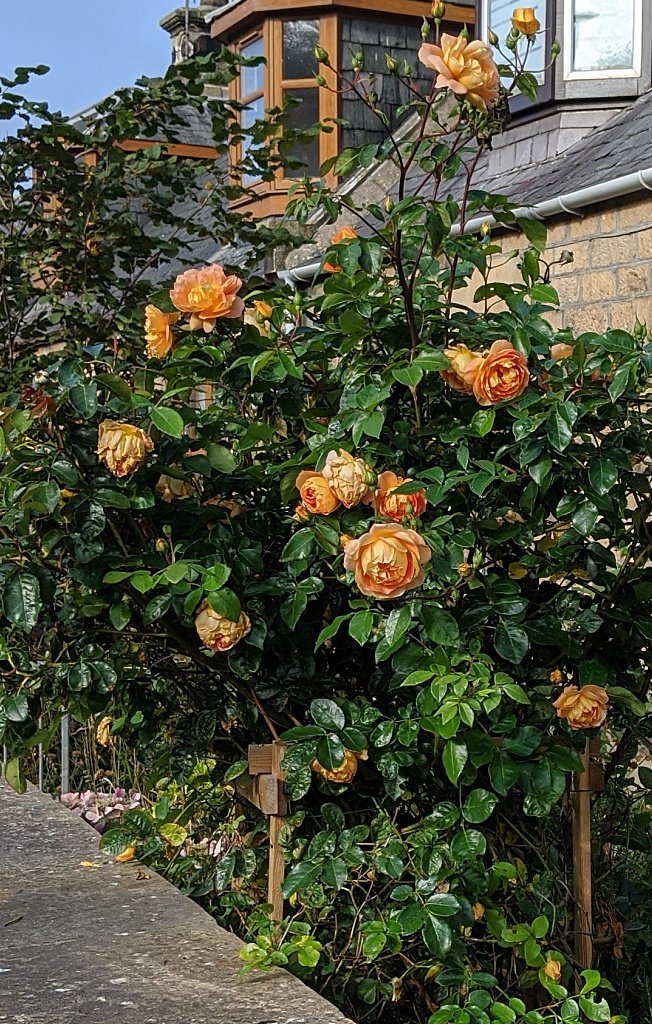
Actually, its close relation Rosa canina flourishes in my garden as well and I have no idea how it got there. Probably a bird. But the hips are nice in autumn, even if the flowers are, uhmm, quietly understated. Or at least they can’t compete with the coppery dazzle of the ‘Pat Austin’ that is established next to it.
Anyway, King Edward of England’s mother, Eleanor of Provence, was French and she had already adopted the rose as her emblem as well.
And it is from this French connection perhaps that, centuries later, we end up with a Scottish connection: the Jacobite white rose or ‘cockade’ of Bonnie Prince Charlie.
Mary Queen of Scots and her great, great, great grandson
Romantic Chairlie’s ancestor, the equally romantic Mary Queen of Scots, married the Dauphin of France (first marriage), and had the right to wear the royal rose (of France). So, it was then associated with the Stewart monarchs of Scotland. They were replaced by the Hanoverian lot and I so don’t want to get into this.
Much later, Mary’s great, great, great grandson Prince Charlie appeared on the Scottish stage, ready to reclaim the throne for the Stuart dynasty.
He or his PR team had the bright idea to wear the white cockade – the simple, white rose of the hedgerow – as a badge for those who had sworn or been coerced into fighting for his cause. And a fat lot of good it did him.
Later on, British nurseries started making money from rose
varieties certainly by the 18th century. The first British rose
catalogue came out in 1833 and soon all these upright Victorian
gardeners were poring over such exotically named varieties as
‘Infidelities of Lisette’ or the ‘Spineless Virgin’ (honest).
Anyway, that’s enough history. But you can see why, with their royal associations, roses always seem to have had a certain cachet.
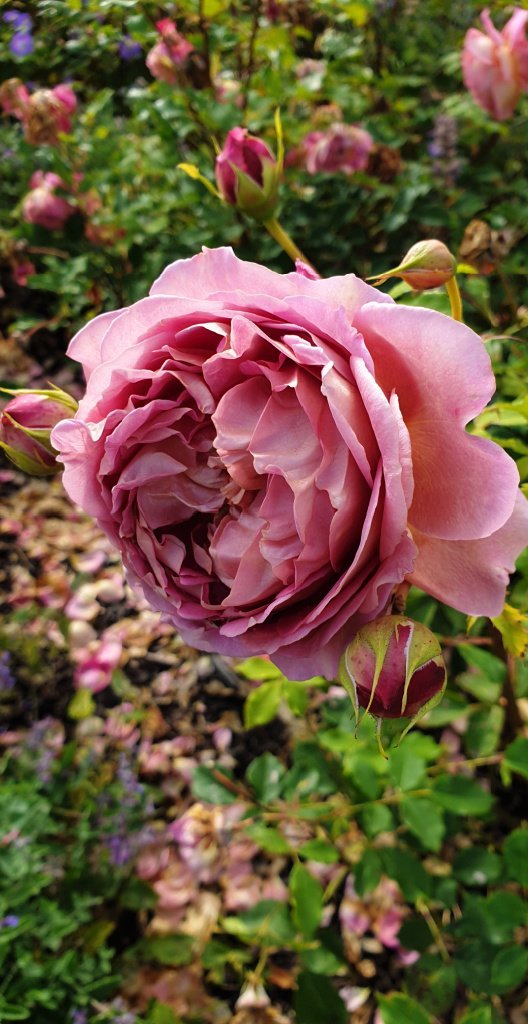
Traditional ‘rose beds’
Today, roses remain very popular and there are probably more
rose care products and books on roses on the shelves of your
average garden centre today than on any other flower family.
The day of the rose bed, exclusively given over to roses, seems
to be coming to an end. Gardeners these days are making roses
a part of their overall planting schemes. Grow shrub roses and you don’t even have to prune – the element of rose-growing that seems to worry rookie gardeners most.
You can still see the ‘rose bed’ practice in municipal parks, for example, at Hazlehead or the Duthie Park in Aberdeen. I mention Aberdeen specifically, as it was formerly strongly associated with rose-growing. It was rumoured in the 1970s-80s that its parks department had a huge annual expenditure on roses and other flowers.
The centre dividing sections of the dual carriageways were lined with displays back then – a changing kaleidoscope of roses in variety. They must have taken some pruning. And Aberdeen was a frequent and consistent winner of Britain in Bloom way back then.

(Above) Well, I looked for a rose in my Google photos. Amongst the results was the picture above. Well, I suppose it does look a bit flower shaped.
These days, the dual carriageways are simply separated by easy to maintain cobbles (setts). I just checked on Google Street View!
So the trend seems to be away from dedicated rose beds, not just in Aberdeen. Roses seem just as popular – you can even buy them in supermarkets – but the dedicated rose bed is only occasionally seen.
Actually, one other place to see a ‘traditional’ rosebed is at the brilliant Saughton Gardens in Edinburgh. It’s fast becoming an Edinburgh ‘must see’.
Most gardeners make roses a part of their overall planting schemes (though scheme may be too deliberate a word – given how often plants are bought on a whim!)
Grow shrub roses and you hardly have to prune. I’ve tied my ‘Buff Beauty’ to a post to stop it flopping over its potentilla neighbour and other than a feed now and again, all I have to do is sit back and enjoy the scent. Tidying and dead-heading should be all.
In fact, it’s ‘pruning anxiety’ that make some a little scared of roses!
The Dreaded Black Spot on Roses
Another subject over which much agonising seems to go on in the gardening press is black spot, which disfigures leaves weakens the plant and generally annoys gardeners.
If your rose has got it, prune out the black bits, and mulch below the plant to prevent rain splashing up spores from the soil. That probably won’t work but you’ll feel you’re doing something right.
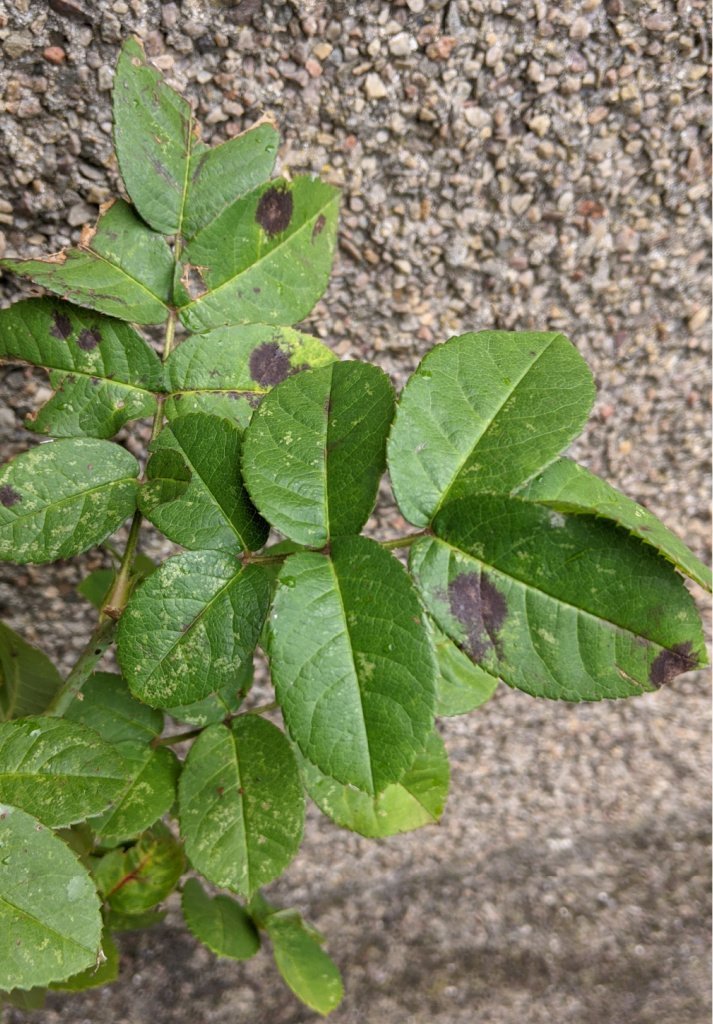
Blackspot is a fungus which also overwinters on diseased leaves. Burn or otherwise dispose of affected leaves and feed the poor wee ailing rose.
Alternatively, get rid of the thing and replace it with a resistant variety. Browse through your favourite rose catalogue to find out which varieties or species are resistant – though the fungus develops new strains frequently, so even a black spot resistant label or description may not be valid for long.
Not putting you off, am I?
A Rose For Every Garden
Rose historians tell us that it was subsequent breeding from the Persian yellow (Rosa foetida persiana), introduced to Britain in 1836 from Iran, which made so many later varieties susceptible, as it was very prone to the disease. Before it came along most others were highly resistant.
Aside from ailments, all of this amounts to saying that there is a rose for whatever kind of gardening you prefer, from inch perfect pruning to stand back and watch it grow.
And as for all those categories: hybrid tea, old shrub rose, and so on. So long as you know height, spread and flowering habit then make your selection based on that. Leave the labels for the rose-geeks (if you get such a thing.)
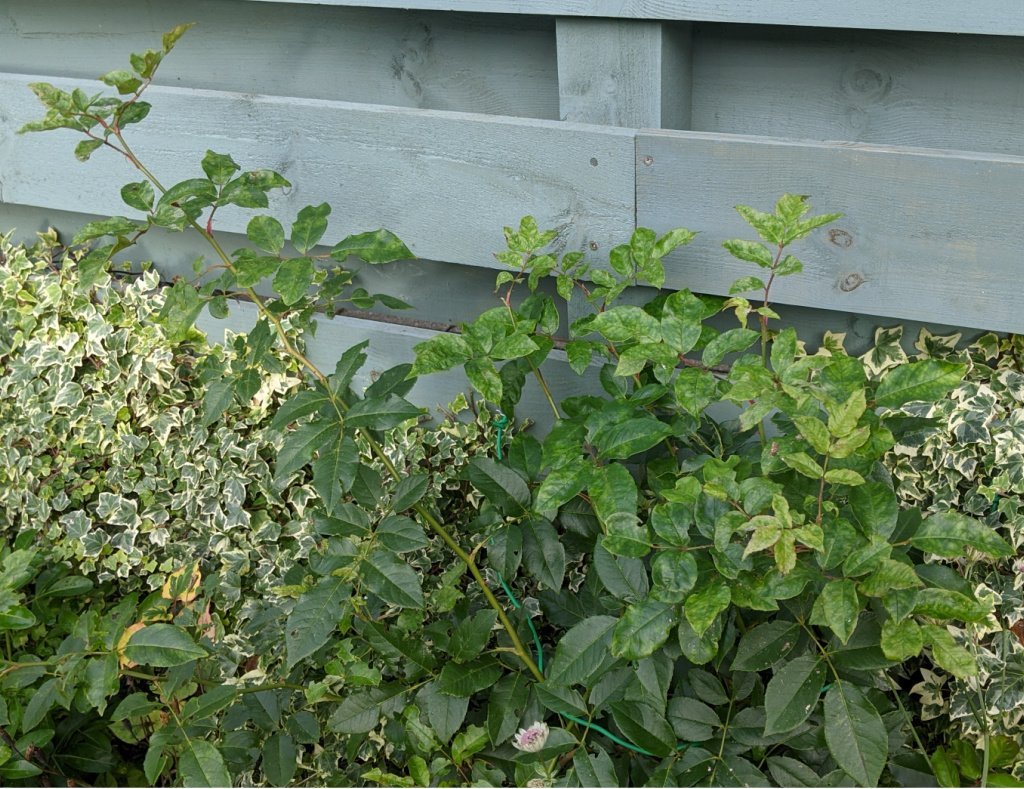
The Mystique of Pruning
On the subject of pruning (if you must), then the advice used to be cut back stems to just above an outward facing bud, using a secateurs, painfully and slowly, one stem at a time.
Alternatively, take the garden shears to your rose and get it done in a moment. (Some say it doesn’t make any difference!) And this might even be heresy – but you know how much I dislike gardening mystique!
Or grow ramblers, scramblers, climbers or shrub roses that just need tidying and a bit of dead-heading if you can be bothered.
As for types of roses, you know already that they come in nearly all colours except some shades of blue. Some are preposterously showy, for instance ‘Masquerade’, with so many colours on one bush that it looks like an accident in a paint factory.
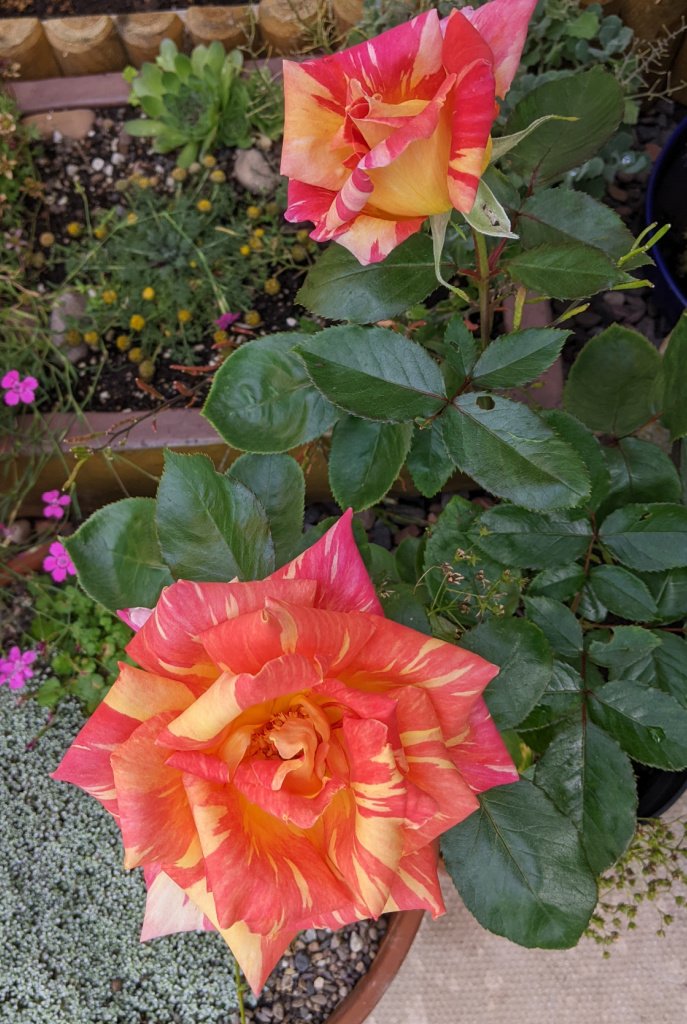
Then there are easy going species such as Rosa moyesii, which gives the worthwhile bonus of bright orangey-red hips from August till well into autumn.
Tough enough for the Scottish climate in any garden I’ve known, it’s another one which needs no pruning apart from a tidy-up when some of its shoots begin to loom over its companions. (Check the colour though – it’s meant to be a rich carmine-red, but there are lipsticky pink shades around as well.)
Whatever you choose, enjoy the colours and scents. Growing a few fragrant roses needn’t be complicated.
